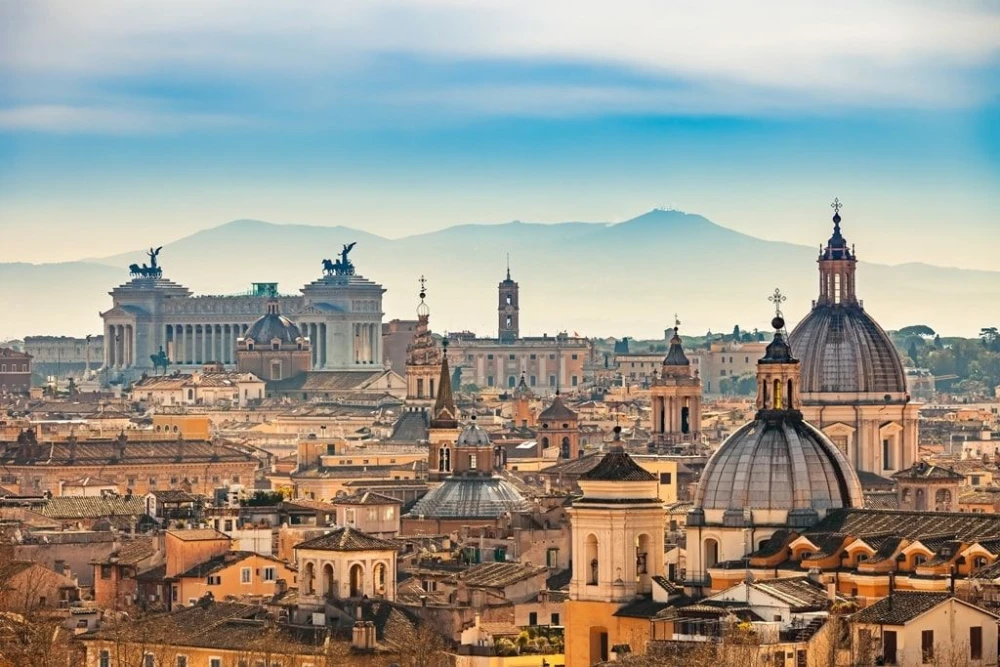15124, Maroysi, Athens, Greece
San Juan, Ponta Delgada, Funchal (Madeira), Granada (motril), Ibiza, Palma De Mallorca, Barcelona, Villefranche (Nice), Livorno (Florence, Piza), Civitavecchia (Rome)

Ponta Delgada is the largest municipality and administrative capital of the Autonomous Region of the Azores in Portugal, lying around a natural bay on São Miguel Island, the largest and most populous in the archipelago. Identified by its three arches known as the Portas da Cidade, it stands out for the large number of churches and other buildings, among which the baroque São Sebastião Church and the Todos os Santos Church. White-washed houses and buildings, 17th and 18th Century convents and churches decorate its rolling hills. Cobbled streets and small squares are found around the centre, where there is also a large boulevard, which is perfect for evening seaside walks. Visit Museu Carlos Machado (Carlos Machado Museum), the beautiful Praça 5 de Outubro (5th of October Square) which is dominated by a marvellous Renaissance Fortress, the Fortaleza de São Brás, the most romantic garden and most lush area in the city, Jardim António Borges (António Borges Gardens) or tour to the natural wonders of the island, such as the Lagoa das Sete Cidades (Seven Cities Lake), which is formed by two large lakes that fill the massive crater of a dormant volcano. From the Pico do Carvão one can enjoy fabulous panoramic views over the Lagoa das Sete Cidades.
Madeira is located in the north Atlantic Ocean, 520 km from the African coast and 1.000 km from the European continent. Today, it is a popular year-round resort, noted for its wine, flowers, landscapes and embroidery artisans. Madeira's capital Funchal, on the island's south coast, rises straight up from the sea and enchants visitors, with its red roofs and hibiscus easing gently down the lower slopes of Pico do Arieiro to the ocean. Time given, take the cable car toMonte Palace, in a 15-minute ride up and over the old town of Funchal and the Ribeira de Joao Gomes valley. When in town, wander along the Old centre, with its port and promenade, quaint and narrow winding streets, shops, cafés, bars and restaurants and view "Worker's Market", the 15th-century cathedral, the Theatre, the Town Hall and the waterfront.
Motril is a beautiful town on the Mediterranean coast in the province of Granada, Spain. It has been a historic gateway for many civilizations. Motril is an ideal place for all kinds of water sports. Visit can enjoy many attractions of cultural interest
One of Spain's Balearic Islands, Ibiza lies about 50 miles off the coast of Spain. Over the course of its history, it has been claimed by the Phoenicians, Romans, Vandals, Byzantines, Moors, Greeks and Carthagenians. Today's cruise visitors come for the vibrant nightlife at the ever so famous night clubs, for the sunny beaches, the clear waters and a little historical flavor. The fortified upper section of Ibiza Town depicts Renaissance architecture and has earned it recognition as a UNESCO World Heritage Site.

Palma is a busy commercial and cultural center, capital city of the autonomous community of the Balearic Islands of Spain. Situated on the south coast of the island on the Bay of Palma, it became a tourist destination in the 1950s and till today it is considered as one of Europe’s major holiday destinations.The historic centre is the oldest part of the city and a refreshing area for a stroll at the narrow and shady streets, which will give you a chance to peek in at a number of private courtyards. The city flourished during the 19th century and today, it mixes perfectly, the modern hotel chains and flashy shops with the old architecture in the Old Town. A walk along the narrow streets will reveal the restored 13-th century cathedral standing proud in the center of town. Among Palma's lovely sights are the Gothic-style Bellver Castle, the Almudaina Palace, once home to Mallorcan kings, the Arab bath building, the only building dating to the Arab settlement, Plaça del Mercat and interesting art nouveau buildings.

Barcelona is one of the world's greatest treasures, a global capital of commerce, fashion, culture and sunshine. Cruise visitors should start with a walk down Las Ramblas, the glorious tree-shaded thoroughfare at the heart of the city, enjoy a dive in the wonderful beaches nearby, but, most of all, see what visionary architect Antoni Gaudi wrought. Seven of his creations have been honored as UNESCO World Heritage Sites, including La Sagrada Familia, the Park Guell and Casa Mila. Time provided, you can also visit the former Olympic Ring on the hill of Montjuic, home to world-class parks, fountains and museums. Barcelona, which nurtured such artistic giants as Picasso, Dali, Miro and Casals, is definitely a traveler's paradise.
Located on the south east coast of France on the Mediterranean Sea, Nice has a hot-summer Mediterranean climate. The blue waters of the Cote d'Azur and the palm-lined promenade make a striking background for this elegant city.

Livorno, Tuscany's second-largest city, is the maritime gateway to the Tuscany region and its two most known cities, Florence (to the west) and Pisa (to the north). Among Livorno's main attractions are the Cisternone, an impressive neoclassical building on Viale Giosue Carducci, designed like a Roman bath, the main city square Piazza della Repubblica with Fortezza Nuova (the castle dating back to around 1576) in the background and a number of interesting shops in the city centre that visitors can explore. Florence, the cradle of the Renaissance, is home to the Duomo, the Uffizi and the Ponte Vecchio. Pisa contains a host of beautiful cathedrals, palaces and bridges over the Arno River, as well as its glorious Leaning Tower, monument to faulty engineering.

Our gateway to the Eternal City, Civitavecchia has served as Rome's seaport since the 13th century, boasting a long and venerable history. Its location near the modern city, made it a perfect vacation resort for emperor Trajan, who built a pleasure villa. while Bernini and Michelangelo designed the harbor fortifications. Yet the Eternal City, the ancient capital of the Western World and the center of Christianity for nearly 2.000 years, is our main reason to be here. YYou can visit the ruins of the Forum and the Colosseum, throw a coin in Fontana di Trevi to make sure you return to Rome one day, take a photo in front of the Vatican, view the splendors of the Sistine Chapel or climb the Spanish Steps, once the heart of Rome's Bohemian Quarter and enjoy a delicious gelato, in the glamorous area.
Itinerary







